Best Sellers
451 products
-
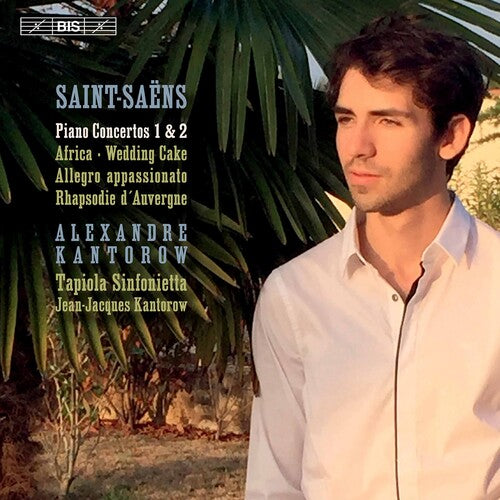
-
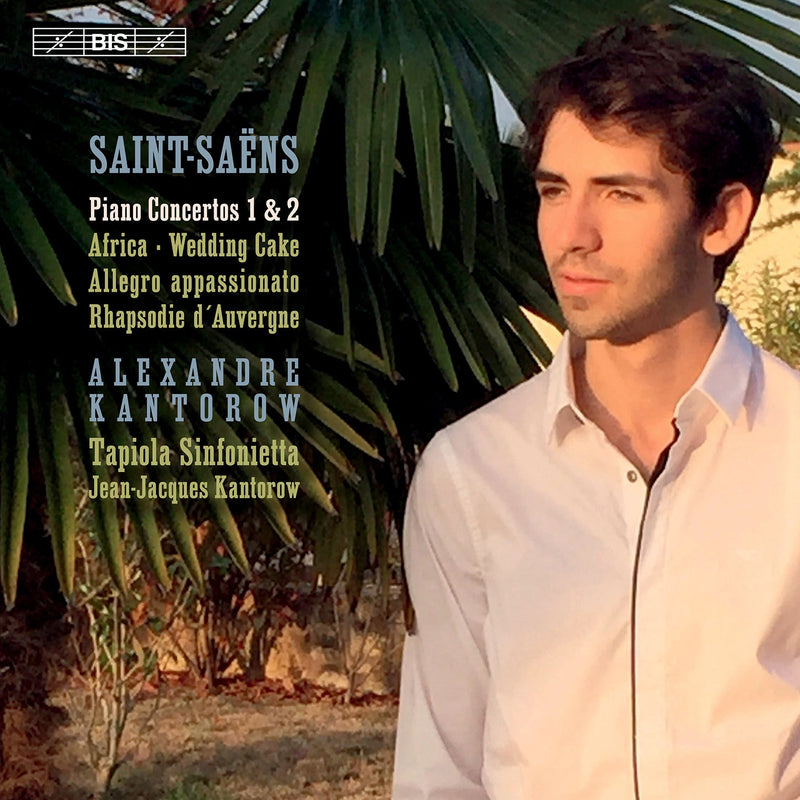
-
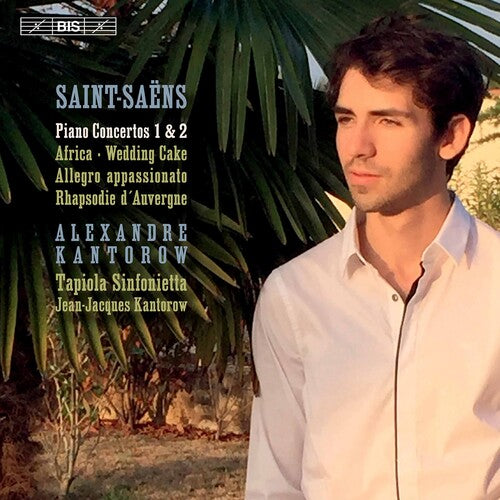 {# optional: put hover video/second image here positioned absolute; inset:0 #}
On SaleBIS
{# optional: put hover video/second image here positioned absolute; inset:0 #}
On SaleBISSaint-Saëns: Piano Concertos Nos. 1 & 2 / Kantorow, Tapiola Sinfonietta
In 2019, Alexandre and Jean-Jacques Kantorow’s recording of the last three piano concertos by Camille Saint-Saëns earned the highest praise around the...
April 01, 2022$21.99$15.99 -
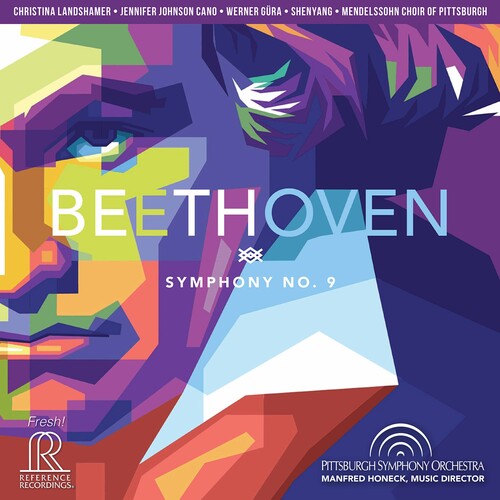
-
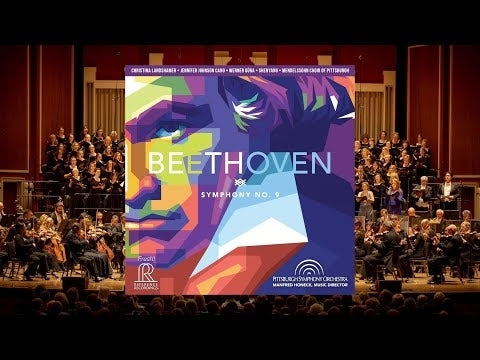
-
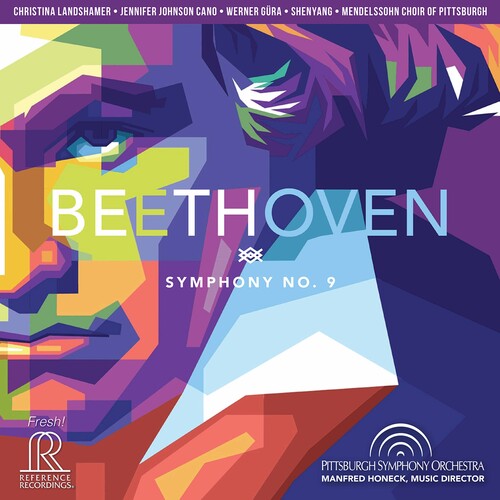 {# optional: put hover video/second image here positioned absolute; inset:0 #}
Reference Recordings
{# optional: put hover video/second image here positioned absolute; inset:0 #}
Reference RecordingsBeethoven: Symphony No. 9 / Honeck, Pittsburgh Symphony
A 2021 GRAMMY Nominee for Best Orchestral Performance and for Best Engineered Album! Celebrate Beethoven’s Symphony No. 9 in a new and...
$21.99February 12, 2021 -
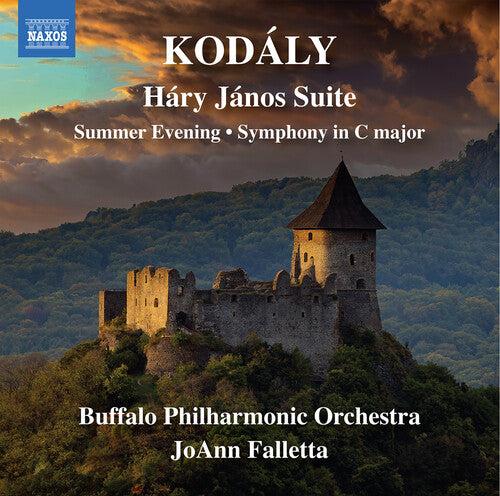
-
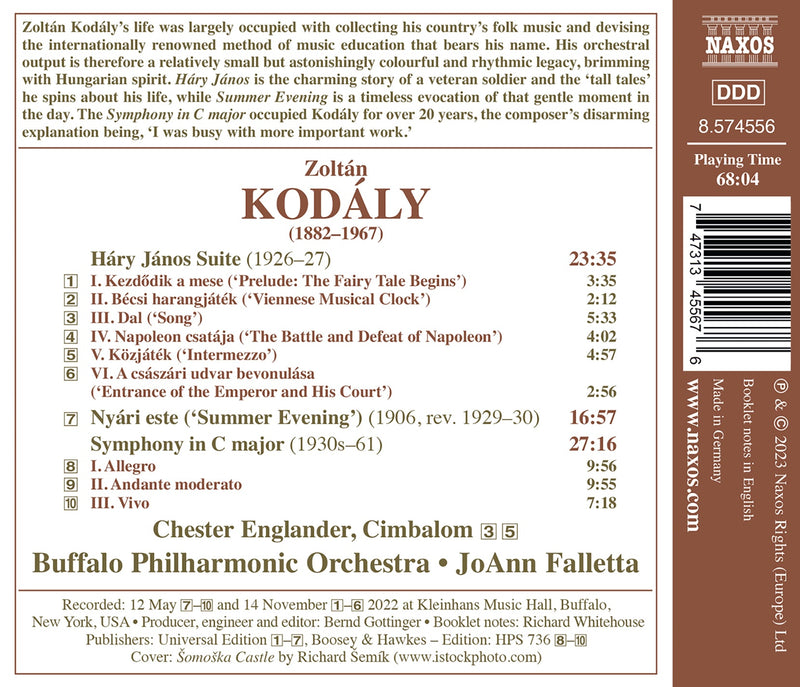
-
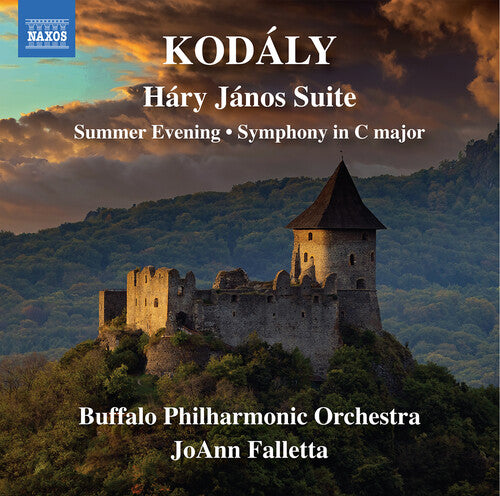 {# optional: put hover video/second image here positioned absolute; inset:0 #}
On SaleNaxos
{# optional: put hover video/second image here positioned absolute; inset:0 #}
On SaleNaxosKodály: Háry János Suite; Symphony in C / Falletta, Buffalo Philharmonic
Zoltán Kodály’s orchestral output is relatively small but brimming with Hungarian spirit. JoAnn Falletta and the Buffalo Philharmonic (BPO) present one of...
October 27, 2023$19.99$9.99 -
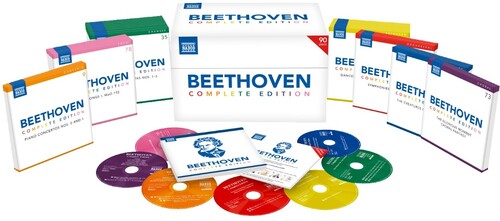
-
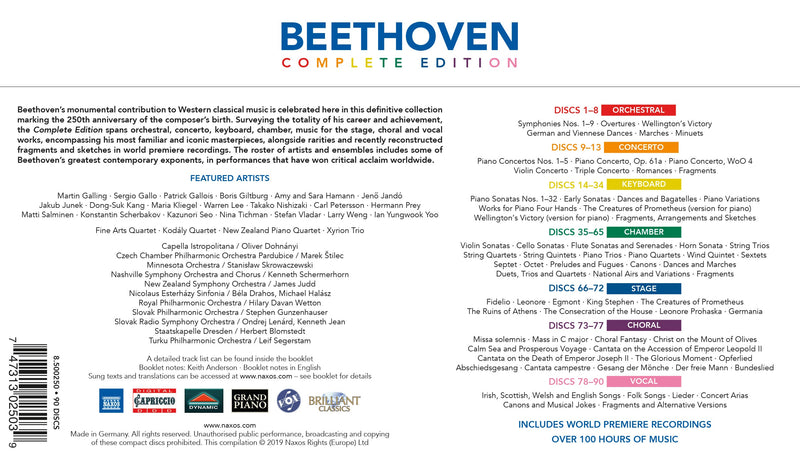
-
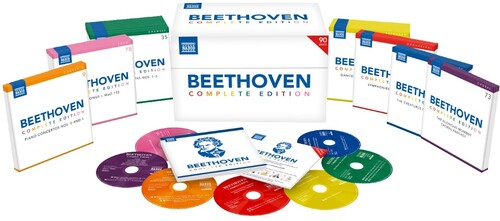 {# optional: put hover video/second image here positioned absolute; inset:0 #}
Naxos
{# optional: put hover video/second image here positioned absolute; inset:0 #}
NaxosBeethoven: Complete Edition
Beethoven's monumental contribution to Western classical music is celebrated here in this definitive collection marking the 250th anniversary of the composer's birth....
$160.99November 01, 2019 -
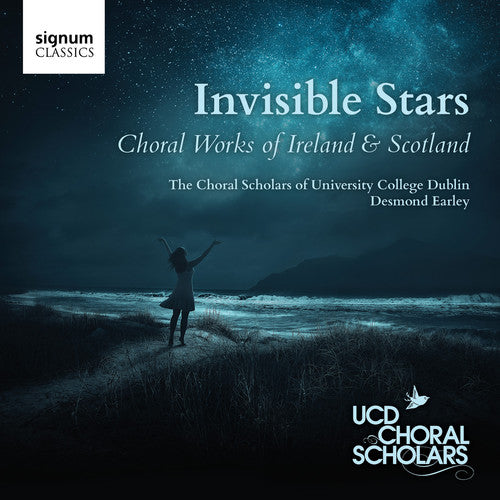
-
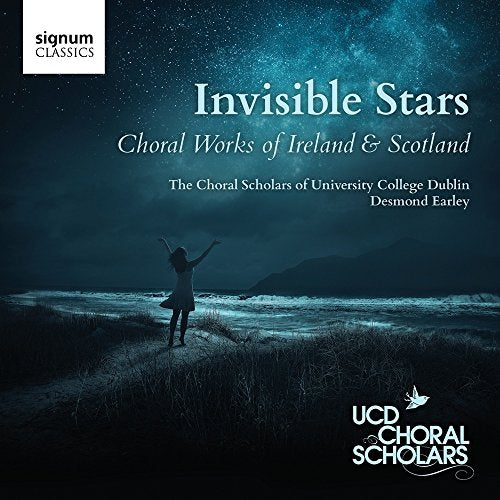
-
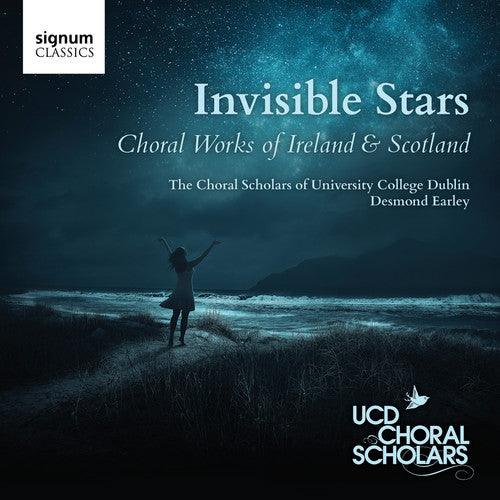 {# optional: put hover video/second image here positioned absolute; inset:0 #}
On SaleSignum Classics
{# optional: put hover video/second image here positioned absolute; inset:0 #}
On SaleSignum ClassicsInvisible Stars: Choral Works of Ireland & Scotland / Choral Scholars of University College
Ireland’s leading collegiate choral ensemble, The Choral Scholars of University College Dublin bring us their first recording on Signum. The program of...
February 12, 2016$19.99$9.99 -
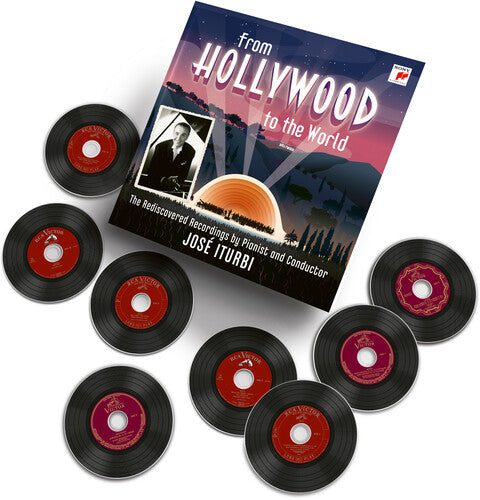
-
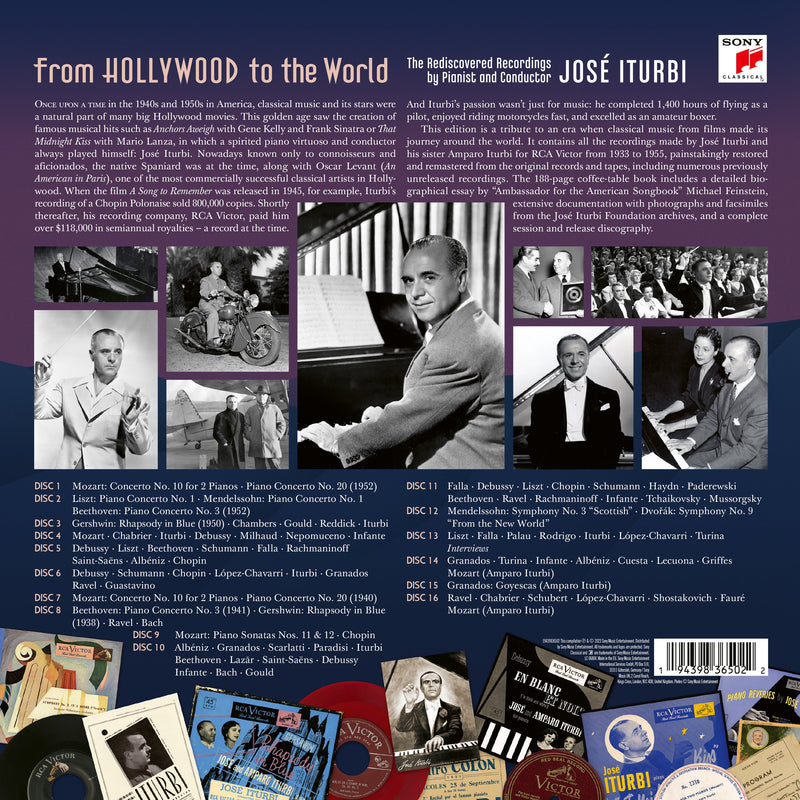
- Mozart: Concerto for 2 Pianos and Orchestra No. 10 in E flat, K365
- Mozart: Piano Concerto No. 20 in D minor, K466
- Liszt: Piano Concerto No. 1 in E flat major, S124
- Mendelssohn: Piano Concerto No. 1 in G minor, Op. 25
- Beethoven: Piano Concerto No. 3 in C minor, Op. 37
- Gershwin: Rhapsody in Blue
- Chambers, J C: All American
- Gould, M: Symphonette No. 4 'Latin-American'
- Reddick: Espanharlem
- Iturbi: Soliloquy
- Mozart: Sonata for 2 pianos in D major, K448
- Chabrier: Trois Valses Romantiques
- Iturbi: Spanish Dance
- Debussy: En blanc et noir
- Milhaud: Scaramouche, suite for two pianos, Op. 165b
- Nepomuceno: La siesta
- Infante: Guadalquivir
- Infante: Sevillana
- Debussy: Suite bergamasque: Clair de lune
- Liszt: Liebestraum, S541 No. 3 (Nocturne in A flat major)
- Debussy: Rêverie
- Beethoven: Für Elise (Bagatelle in A minor, WoO59)
- Schumann: Arabeske in C major, Op. 18
- Debussy: Deux arabesques, L. 66
- Falla: Dance of Terror (from El amor brujo)
- Rachmaninoff: Prelude Op. 3 No. 2 in C sharp minor
- Liszt: Les jeux d'eaux à la Villa d'Este, S. 163 No. 4)
- Falla: Ritual Fire Dance (from El amor brujo)
- Saint-Saëns: Allegro appassionato, Op. 70
- Albéniz: Malagueña (No. 3 from Espana, Op. 165)
- Chopin: Étude Op. 10 No. 12 in C minor ‘Revolutionary'
- Chopin: Polonaise No. 6 in A flat major, Op. 53 'Héroïque'
- Debussy: Estampe No. 3 - Jardins sous la pluie
- Schumann: Romance in F sharp major, Op. 28 No. 2
- Chopin: Prelude Op. 28 No. 9 in E major
- Chopin: Prelude Op. 28 No. 10 in C sharp minor
- Chopin: Prelude Op. 28 No. 15 in D flat major ‘Raindrop'
- Chopin: Nocturne No. 9 in B major, Op. 32 No. 1
- López-Chavarri: El viejo castillo moro
- Iturbi: Cancion de cuna
- Granados: Orientale (No. 2 from 12 Danzas españolas)
- Chopin: Mazurka No. 6 in A minor, Op. 7 No. 2
- Chopin: Mazurka No. 7 in F minor, Op. 7 No. 3
- Chopin: Mazurka No. 24 in C major, Op. 33 No. 3
- Chopin: Mazurka No. 27 in E minor, Op. 41 No. 2
- Chopin: Mazurka No. 25 in B minor, Op. 33 No. 4
- Chopin: Scherzo No. 2 in B flat minor, Op. 31
- Debussy: Children's Corner
- Ravel: Jeux d'eau
- Guastavino: Gato
- Mozart: Concerto for 2 Pianos and Orchestra No. 10 in E flat, K365
- Mozart: Piano Concerto No. 20 in D minor, K466
- Beethoven: Piano Concerto No. 3 in C minor, Op. 37
- Gershwin: Rhapsody in Blue
- Ravel: Pavane pour une infante défunte
- Bach, J S: Passacaglia in C minor, BWV582
- Mozart: Piano Sonata No. 11 in A major, K331 'Alla Turca'
- Mozart: Piano Sonata No. 12 in F major, K332
- Chopin: Impromptu No. 4 in C sharp minor, Op. 66 'Fantaisie-Impromptu'
- Chopin: Waltz No. 6 in D flat major, Op. 64 No. 1 'Minute Waltz'
- Chopin: Waltz No. 7 in C sharp minor, Op. 64 No. 2
- Chopin: Mazurka No. 5 in B flat major, Op. 7 No. 1
- Albéniz: Sevilla (from Suite Española, Op. 47)
- Granados: Goyescas: Quejas ó La Maja y el Ruiseñor
- Scarlatti, D: Keyboard Sonata K27 in B minor
- Scarlatti, D: Keyboard Sonata K159 in C major 'La caccia'
- Paradies: Toccata in A
- Iturbi: Pequena danza espanola
- Beethoven: Andante Favori in F, WoO 57
- Albéniz: Cantos de España (5), Op. 232, No. 4
- Lazăr, F: Piano Sonata No. 2 in F Minor, Op. 15: III Tempo di Marcia funebre
- Saint-Saëns: Caprice arabe, Op. 96
- Debussy: L'isle joyeuse
- Infante: Danze andaluse (for 2 pianos): No. 2 Sentimento
- Debussy: Deux arabesques, L. 66
- Bach, J S: Fantasia in C minor, BWV906
- Granados: Danza española, Op. 37 No. 10 'Melancólica'
- Gould, M: Boogie Woogie Etude
- Gould, M: Blues
- Falla: Ritual Fire Dance (from El amor brujo)
- Falla: Dance of Terror (from El amor brujo)
- Debussy: Suite bergamasque: Clair de lune
- Liszt: Liebestraum, S541 No. 3 (Nocturne in A flat major)
- Chopin: Polonaise No. 6 in A flat major, Op. 53 'Héroïque'
- Schumann: Arabeske in C major, Op. 18
- Debussy: Rêverie
- Haydn: Theme and Variations in C major, Hob.XVII:5
- Paderewski: Minuet in G major, Op. 14 No. 1
- Beethoven: Für Elise (Bagatelle in A minor, WoO59)
- Schumann: Träumerei (from Kinderszenen, Op. 15)
- Ravel: Pavane pour une infante défunte
- Rachmaninoff: Humoresque in G major, Op. 10 No. 5
- Infante: Danses andalouses
- Tchaikovsky: The Seasons, Op. 37b: June (Barcarolle)
- Tchaikovsky: The Seasons, Op. 37b: November (Troika)
- Mussorgsky: Une Larme (A Tear)
- Mendelssohn: Symphony No. 3 in A minor, Op. 56 'Scottish'
- Dvořák: Symphony No. 9 in E minor, Op. 95 'From the New World'
- Liszt: Hungarian Rhapsody, S244 No. 14 in F minor
- Falla: El sombrero de tres picos: Dance of the Neighbours (Seguidillas)
- Falla: El sombrero de tres picos: Danza del molinero (farruca)
- Falla: El sombrero de tres picos: Final Dance (Jota)
- Palau Boix: Marche burlesque
- Palau Boix: Hommage a Debussy
- Iturbi: Seguidillas
- Cuesta: Danza valenciana in A major
- Falla: Siete Canciones populares españolas
- Turina: Homenaje a Lope de Vega, Op. 90: I. Cuando tan hermosa os miro
- Granados: Danza española, Op. 37 No. 8 'Sardana'
- Granados: Danza española, Op. 37 No. 12 'Arabesca'
- Granados: Danza española, Op. 37 No. 9 'Romántica'
- Turina: Mujeres Españolas, Series 1, Op. 17: 2. La andaluza sentimental
- Turina: Mujeres Españolas, Series 1, Op. 17: 3. La morena coqueta
- Infante: Pochades andalouses: Canto flamenco
- Infante: ochades andalouses: Danse gitane
- Infante: Pochades andalouses: Aniers sur la route de Seville
- Infante: Pochades andalouses: Tientos
- Albéniz: Granada (from Suite española No. 1, Op. 47)
- Albéniz: Córdoba (No. 4 from Cantos de España, Op. 232)
- Cuesta: Danza valenciana in G major
- Lecuona: Malagueña
- Griffes: The White Peacock
- Infante: Guadalquivir
- Infante: Pochades andalouses: Ritmo
- Mozart: Sonata for 2 pianos in D major, K448: Allegro molto
- Granados: El Pelele
- Granados: Goyescas (piano suite)
- Ravel: Valses nobles et sentimentales
- Chabrier: Scherzo-valse (No. 10 from Pièces pittoresques)
- Chabrier: Idylle (No. 6 from Pièces pittoresques)
- Chabrier: Bourrée Fantasque
- Schubert: Valses Sentimentales, D 779 Op. 50 (Excerpts)
- Schubert: 12 Valses Nobles, D 969 Op. 77: selection
- López-Chavarri: Danza de las labradoras Valencianas
- Shostakovich: Prelude for piano, Op. 34 No. 2 in A minor
- Shostakovich: Prelude for piano, Op. 34 No. 14 in E flat minor
- Shostakovich: Prelude for piano, Op. 34 No. 24 in D minor
- Fauré: Impromptu No. 3 in A flat major Op. 34
- Mozart: Piano Sonata No. 13 in B flat major, K333
-
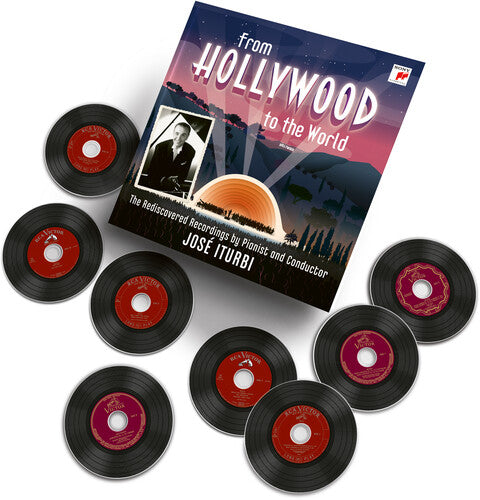 {# optional: put hover video/second image here positioned absolute; inset:0 #}
On SaleSony Masterworks
{# optional: put hover video/second image here positioned absolute; inset:0 #}
On SaleSony MasterworksThe Rediscovered RCA Victor Recordings / José Iturbi
This collection stands as a valuable time capsule from which one comes away with a fuller understanding of Iturbi’s prominence in American...
March 03, 2023$125.98$62.96 -
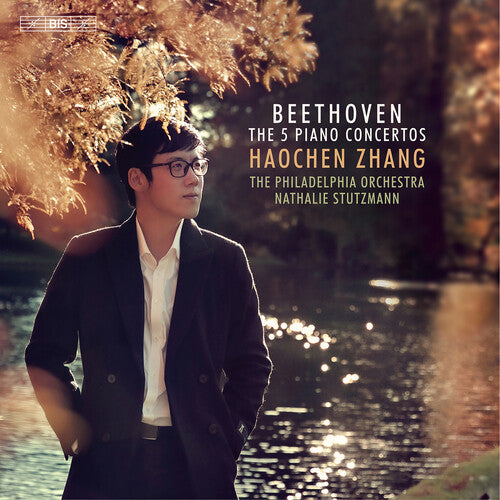
-
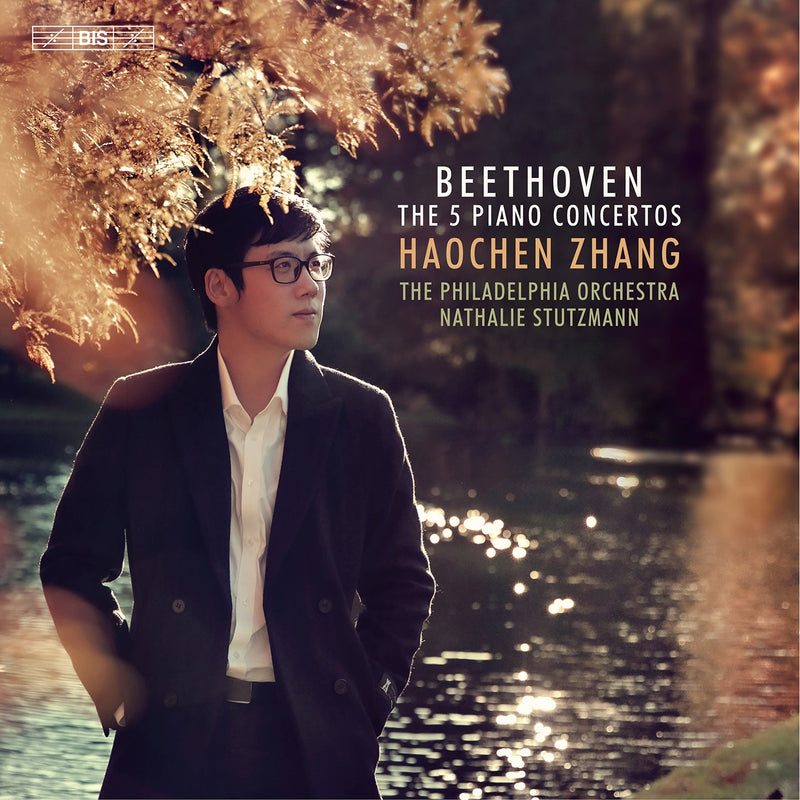
-
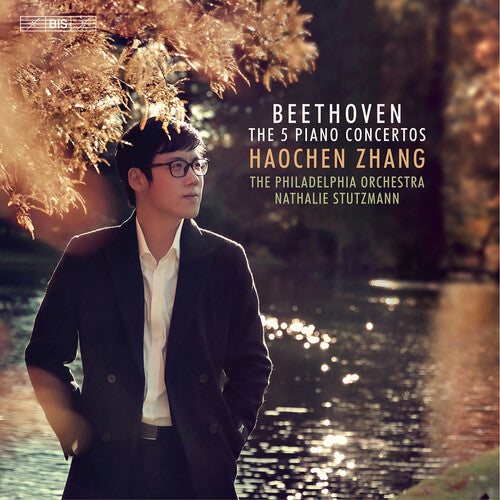 {# optional: put hover video/second image here positioned absolute; inset:0 #}
On SaleBIS
{# optional: put hover video/second image here positioned absolute; inset:0 #}
On SaleBISBeethoven: The 5 Piano Concertos / Haochen Zhang, Stutzmann, Philadelphia Orchestra
As one of the finest pianists of his era and an improviser of genius, Ludwig van Beethoven’s preferred vehicle for musical exploration...
October 07, 2022$42.99$30.99 -
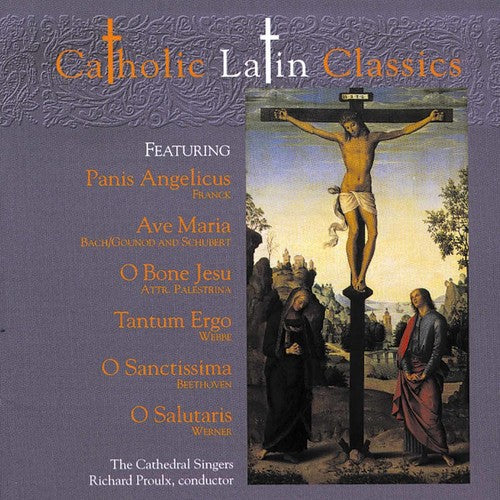 {# optional: put hover video/second image here positioned absolute; inset:0 #}
GIA
{# optional: put hover video/second image here positioned absolute; inset:0 #}
GIACatholic Classics, Vol. 4: Catholic Latin Classics
Relive the glory of classic Catholic favorites... all in Latin! The Cathedral Singers of Chicago along with conductor Richard Proulx beautifully interpret...
$18.99January 01, 2000 -
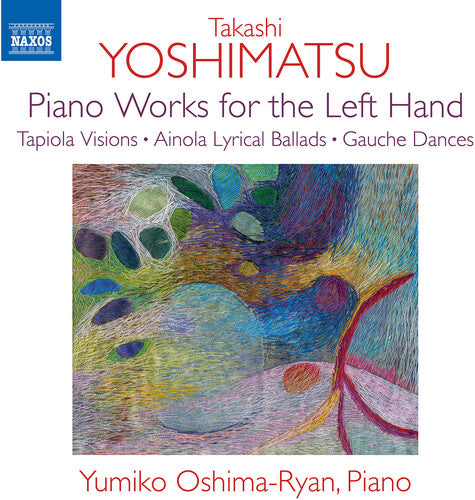
-
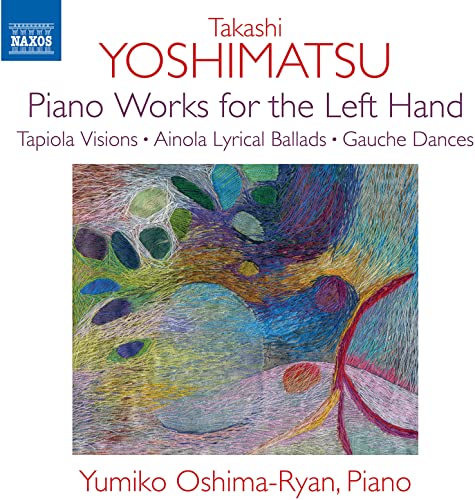
-
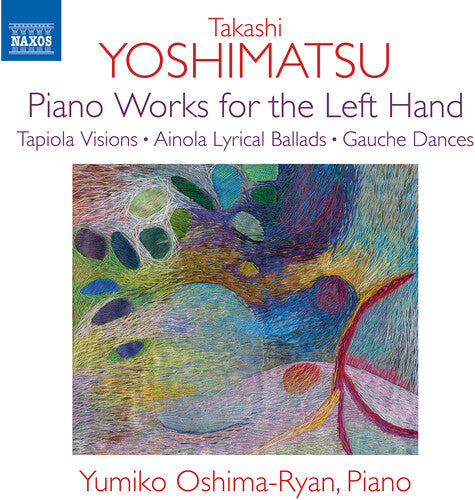 {# optional: put hover video/second image here positioned absolute; inset:0 #}
On SaleNaxos
{# optional: put hover video/second image here positioned absolute; inset:0 #}
On SaleNaxosYoshimatsu: Piano Works for the Left Hand
Takashi Yoshimatsu's wide-ranging musical influences often combine jazz and rock elements with classical, folk and world music. This album focuses on a...
May 13, 2022$19.99$9.99 -
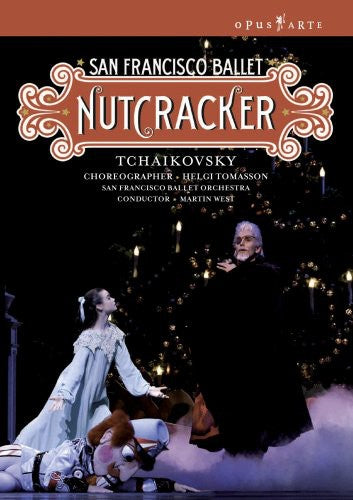
-
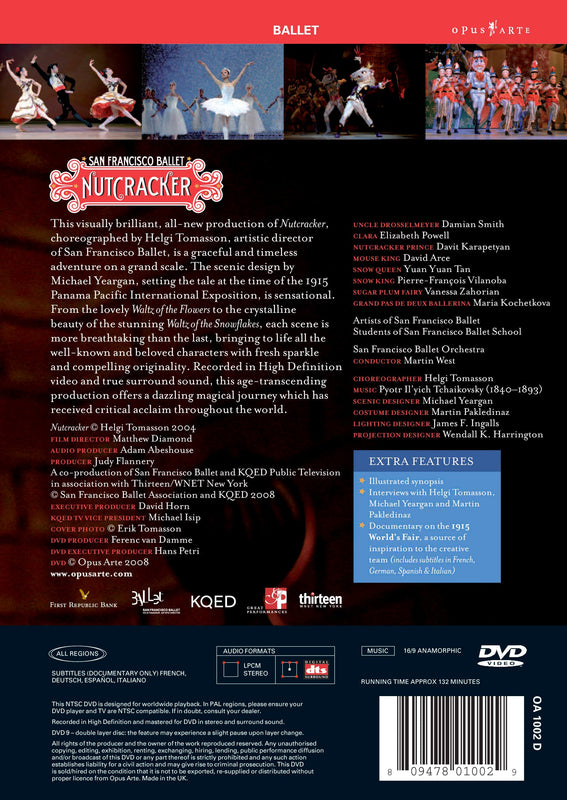
-
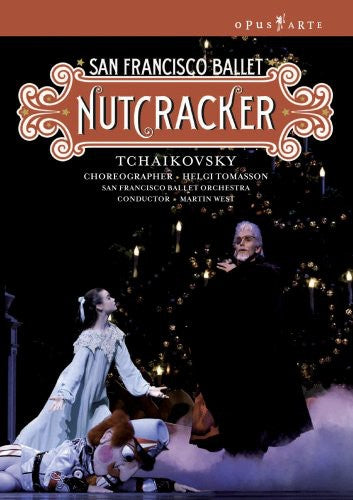 {# optional: put hover video/second image here positioned absolute; inset:0 #}
On SaleOpus Arte
{# optional: put hover video/second image here positioned absolute; inset:0 #}
On SaleOpus ArteTchaikovsky: The Nutcracker / San Francisco Ballet
Also available on Blu-ray 3253870.zz80_TCHAIKOVSKY_Nutcracker_Martin.html TCHAIKOVSKY Nutcracker & • Martin West, cond; Damian Smith ( Drosselmeyer ); Elizabeth Powell ( Clara );...
November 18, 2008$34.99$26.99 -
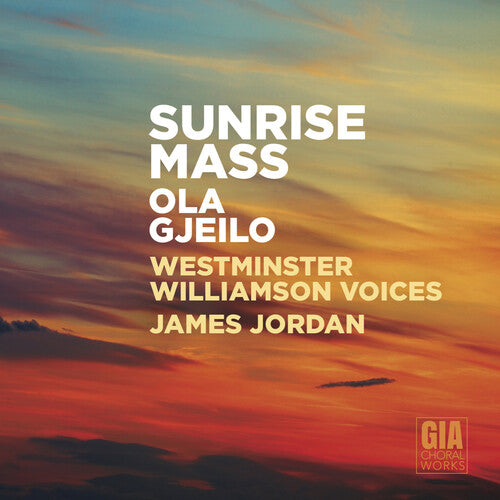
-
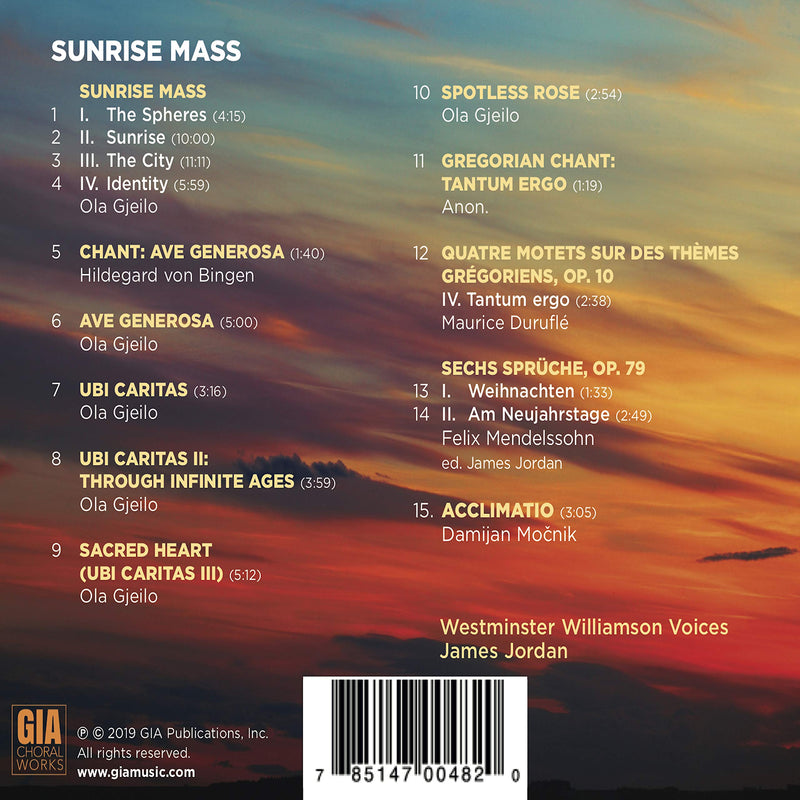
-
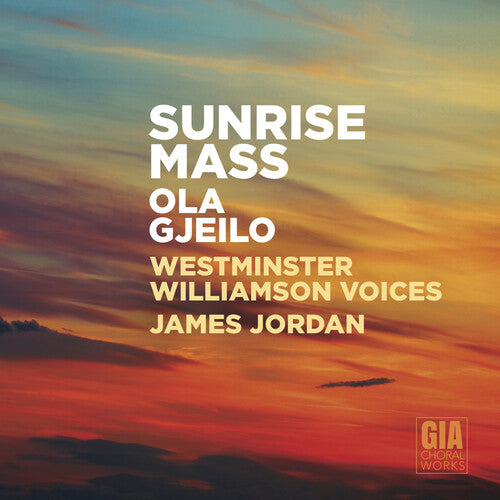 {# optional: put hover video/second image here positioned absolute; inset:0 #}
On SaleGIA
{# optional: put hover video/second image here positioned absolute; inset:0 #}
On SaleGIAGjeilo: Sunrise Mass / Jordan, Westminster Williamson Voices
Sunrise Mass is a magical recording that includes compelling music by Ola Gjeilo along with several complementary selections by Durufle, Mendelssohn, and...
June 07, 2019$18.99$14.99 - Buxtehude: Ciacona in E minor, BuxWV160
- Chávez: Danza a Centeotl (from the Ballet 'Los cuatro soles')
- Chávez: El venado
- Chávez: Huapango de Vera Cruz
- Chávez: La bamba
- Chávez: La paloma azul
- Chávez: Los Cuatro Soles
- Chávez: Pirámide (Ballet in four acts)
- Chávez: Soli I
- Chávez: Soli II
- Chávez: Soli IV
- Chávez: Sones Mariachi for Small Mexican Orchestra
- Chávez: Symphony No. 1 ‘Sinfonía de Antígona'
- Chávez: Symphony No. 2 ‘Sinfonía India'
- Chávez: Symphony No. 3
- Chávez: Symphony No. 4: ‘Sinfonía Romántica'
- Chávez: Symphony No. 5
- Chávez: Symphony No. 6
- Chávez: Violin Concerto
- Chávez: Xochipili
- Chávez: Yaqui Music de Sonora
-
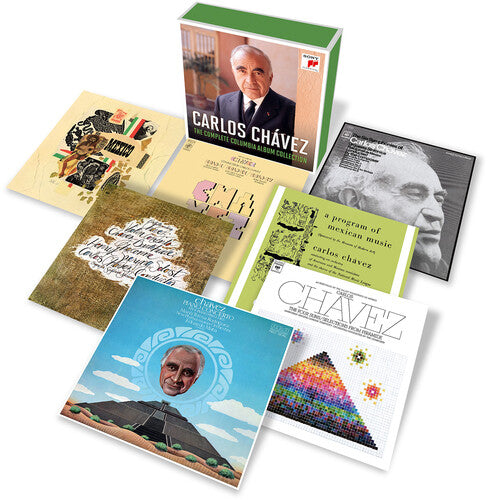 {# optional: put hover video/second image here positioned absolute; inset:0 #}
On SaleSony Masterworks
{# optional: put hover video/second image here positioned absolute; inset:0 #}
On SaleSony MasterworksChávez: The Complete Columbia Album Collection
Sony Classical is pleased to announce an important reissue of works by Carlos Chávez, one of the most influential figures in the...
July 07, 2023$46.98$23.48 -
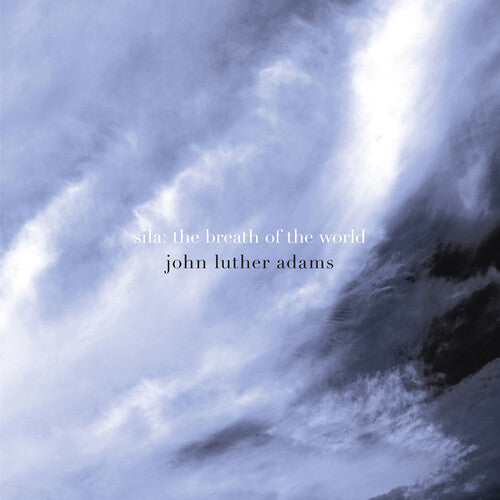
-
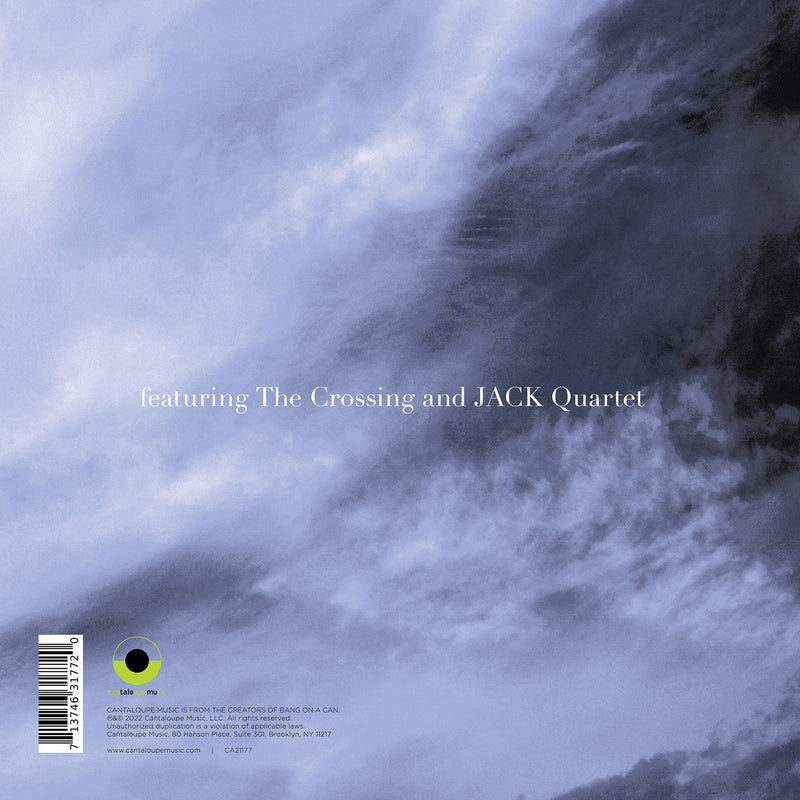
-
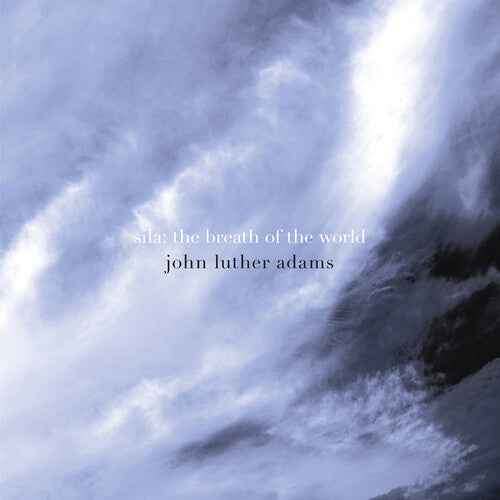 {# optional: put hover video/second image here positioned absolute; inset:0 #}
Cantaloupe Music
{# optional: put hover video/second image here positioned absolute; inset:0 #}
Cantaloupe MusicJ.L. Adams: Sila - The Breath of the World / JACK Quartet, The Crossing
Acclaimed by the New York Times as "an alluring, mystical new work" when it premiered outdoors at the city's Lincoln Center in...
$21.99September 23, 2022 -
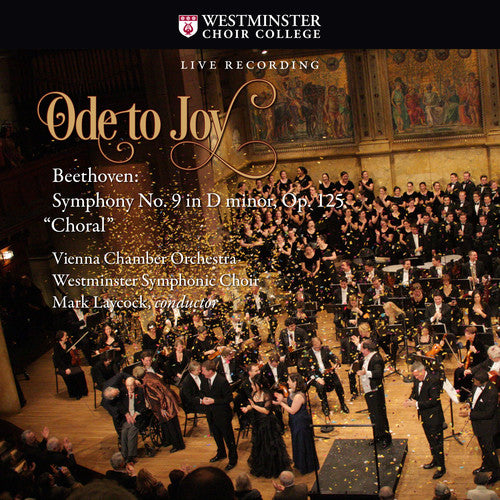
-
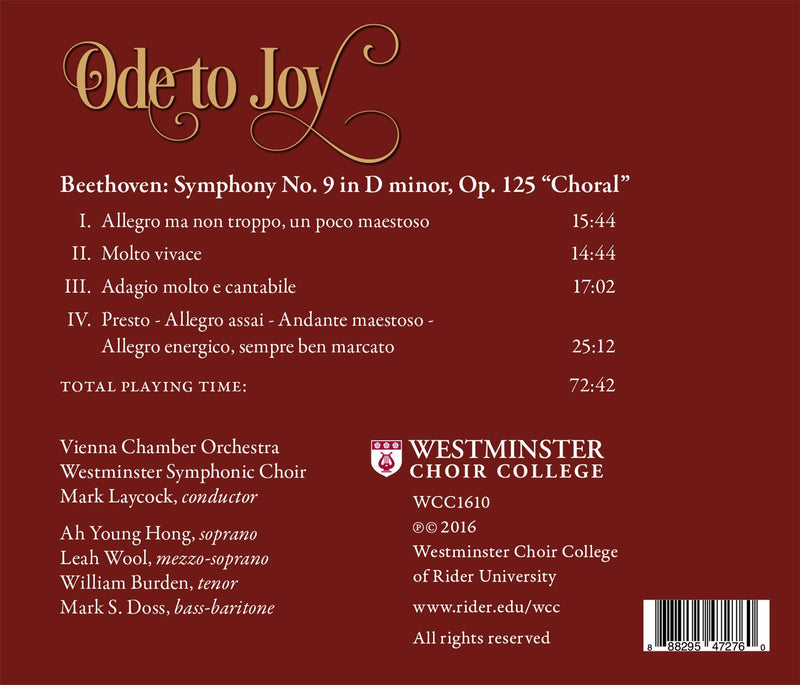
-
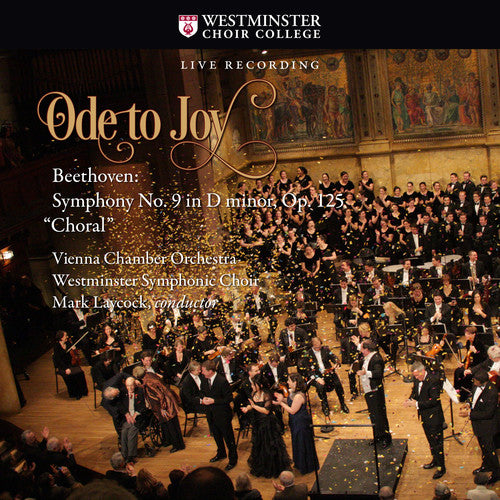 {# optional: put hover video/second image here positioned absolute; inset:0 #}
On SaleWestminster Choir College
{# optional: put hover video/second image here positioned absolute; inset:0 #}
On SaleWestminster Choir CollegeBeethoven: Symphony No. 9 / Laycock, Vienna Chamber Orchestra
This live recording was performed at Princeton University in celebration of the 100th birthday of scholar, philanthropist and human rights advocate William...
October 14, 2016$18.99$14.99 -
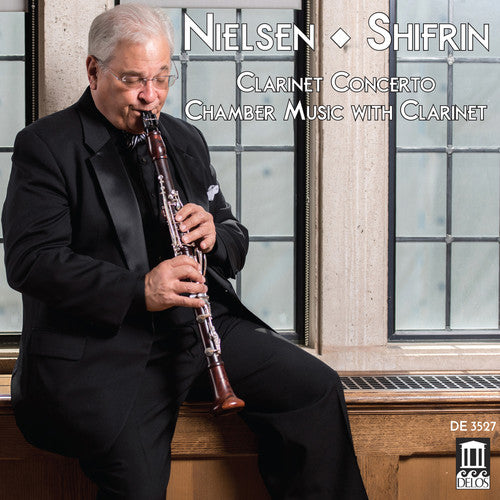
-
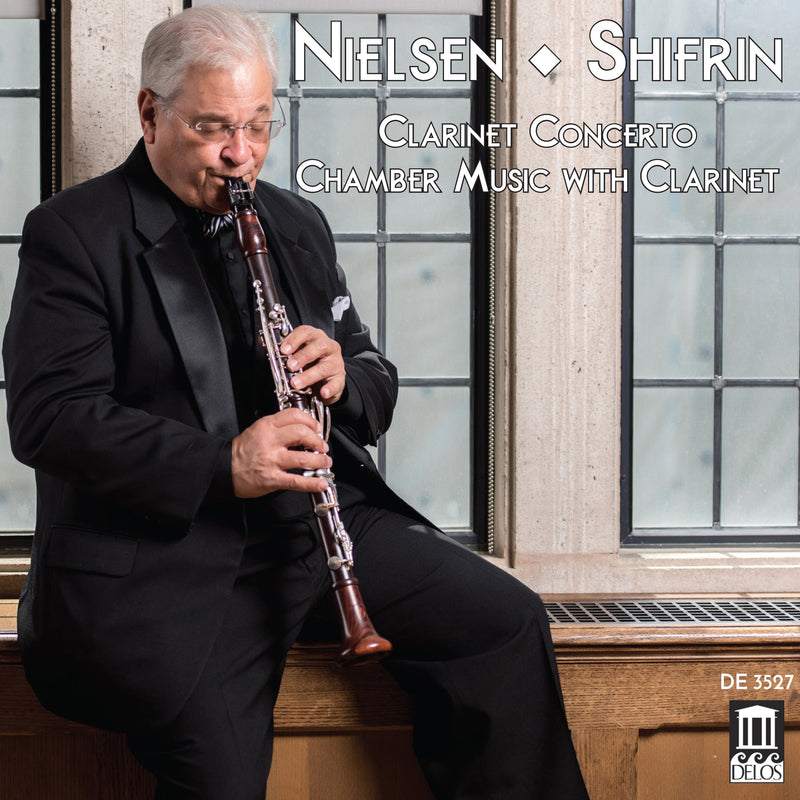
-
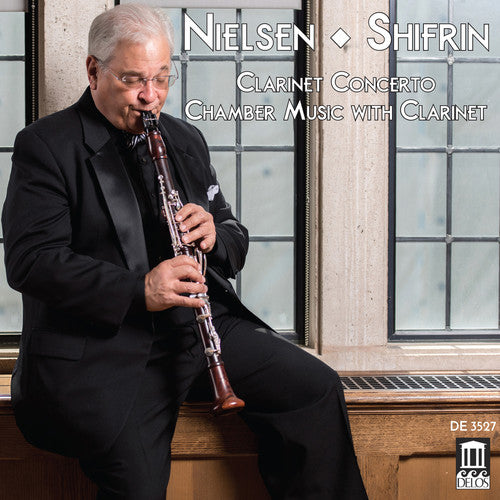 {# optional: put hover video/second image here positioned absolute; inset:0 #}
On SaleDelos
{# optional: put hover video/second image here positioned absolute; inset:0 #}
On SaleDelosNielsen: Clarinet Concerto & Chamber Music with Clarinet
This delightful and lighthearted album features virtuoso clarinetist David Shifrin performing Carl Nielsen’s Clarinet Concerto in a newly arranged accompaniment for chamber...
April 20, 2018$18.99$14.99
Saint-Saëns: Piano Concertos Nos. 1 & 2 / Kantorow, Tapiola Sinfonietta
In 2019, Alexandre and Jean-Jacques Kantorow’s recording of the last three piano concertos by Camille Saint-Saëns earned the highest praise around the world, including a Diapason d’or de l’année, Editor’s Choice in Gramophone and top marks and recommendations from the leading German web sites Klassik Heute and Klassik.com. The Kantorows’ orchestra of choice was the Finnish ensemble Tapiola Sinfonietta, and they have now returned to Helsinki to record not only Saint-Saëns’ first two concertos, but all of the remaining works for piano and orchestra.
Presented on this amply filled disc, the program spans 33 years, the earliest work being Concerto No. 1, regarded as the first significant French piano concerto and written by a 23-year old composer. Ten years later, in 1868, Saint-Saëns composed the Concerto in G minor, a work which at first met with consternation although Liszt – who was present at the first performance – thoroughly approved of it. The work, which begins with the soloist playing what resembles the improvisations of an organist, soon became popular however, and remains one of Saint-Saëns’ best-known works. The shorter pieces which make up the rest of the program were written between 1884 and 1891, and could be said to reveal different aspects of the composer: Wedding Cake was written as a wedding present to a close friend, in Rhapsodie d’Auvergne Saint-Saeëns explored French folk music, while Africa is a piece of pure Orientalism, reflecting his lasting affection for North Africa.
REVIEWS:
What amazed me about young Alexandre Kantorow’s performance was the intensity of the opening cadenza and the subsequent tutti passages where it’s hard to imagine that it’s a chamber orchestra we’re hearing! His treatment of the soloist’s role is always powerful but never lapses into brashness.
All the fill-ups are lovely, but for me the most gorgeous was the Wedding Cake Caprice. The performances have been brilliantly captured and are presented in SACD format.
-- Limelight
The prospect of a recording of any of Saint-Saëns’s works for piano and orchestra is always a delightful one. You know you are in for an hour or more of music that lifts the spirits with its joie de vivre and inexhaustible supply of memorable ideas. The prospect is enhanced, on this occasion, by the same soloist, orchestra and conductor who gave us Concertos Nos 3, 4 and 5 back in the long-ago pre-pandemic days...
There is a palpable exuberance and joy in the way these works come across, none more so in the four concertante works for piano and orchestra, the effervescent Wedding Cake caprice, Rhapsodie d’Auvergne (an early use of French folk song, years ahead of d’Indy and Canteloube), Allegro appassionato (not the better-known work for cello with the same title) and Africa (who else was using North African folk music at this time?).
The album also includes the woefully neglected Piano Concerto No 1, with its opening horn call reminding us of the end of Chopin’s Second Piano Concerto. If the rousing finale doesn’t hook you, then try the haunting slow movement with its prescient passages not only of its successor but of the kind of impressionistic writing that anticipates Ravel by half a century.
It’s a terrific programme – unique for a single disc, so far as I know – clocking in at 85 minutes, and another feather in the cap of the gifted soloist and his partners. The recording offers an exemplary balance between piano and orchestra in a realistic acoustic[.]
-- Gramophone
Beethoven: Symphony No. 9 / Honeck, Pittsburgh Symphony
A 2021 GRAMMY Nominee for Best Orchestral Performance and for Best Engineered Album!
Celebrate Beethoven’s Symphony No. 9 in a new and definitive interpretation from Manfred Honeck and the Pittsburgh Symphony Orchestra! Recorded in superb audiophile sound, this release is the eleventh in the highly acclaimed Pittsburgh Live! series on the FRESH! imprint from Reference Recordings. This series has received GRAMMY® Nominations in 2015, 2016, 2018, 2019 and 2020. Its recording of Shostakovich’s Symphony No.5 /Barber Adagio for Strings won the 2018 GRAMMY® Awards for Best Orchestral Performance and Best Engineered Classical Album. The album booklet includes Maestro Honeck's meticulous music notes, in which he gives us great insight into his unique interpretation as well as the history and musical structure of Beethoven’s most famous symphony.
-----
REVIEW:
Manfred Honeck is one of today’s leading Beethoven conductors. As music director of the Pittsburgh Symphony Orchestra, he has created notably exciting recordings of the Third, Fifth and Seventh Symphonies. Now he and the orchestra, founded 125 years ago this month, are releasing their interpretation of the mighty Ninth.
What makes Honeck’s approach so stimulating in this most standard of repertoire is the sense that he has rethought each bar of the music.
– New York Times
Kodály: Háry János Suite; Symphony in C / Falletta, Buffalo Philharmonic
Zoltán Kodály’s orchestral output is relatively small but brimming with Hungarian spirit. JoAnn Falletta and the Buffalo Philharmonic (BPO) present one of the composer’s most popular works, the Háry János Suite, alongside Summer Evening and the Symphony in C major. Falletta and the BPO’s acclaimed previous Kodály album is on 8573838.
REVIEW:
This is JoAnn Falletta’s second recording for Naxos of music by Kodály and it is every bit as fine as that earlier one. It includes two works which deserve greater exposure than they have received. It also contains Kodály’s most popular orchestral piece, the Háry János Suite. There have been plenty of excellent accounts of this suite, particularly by such Hungarian conductors as István Kertész and Iván Fischer. Falletta holds her own against those, even if none I have heard surpasses Kertész in this music, including his 1964 recorded sound.
The primary reason to get this CD is the rarely performed Symphony in C, a piece that Kodály worked on over a long period beginning in the 1930s and completing only in 1957. It is an attractive and well-orchestrated work with memorable themes and characteristic of Kodály in its harmony and rhythms.
There is plenty of detail to be savoured and at the same time good, but not excessive reverberation. Another fine production from Naxos.
-- MusicWeb International
Beethoven: Complete Edition
Beethoven's monumental contribution to Western classical music is celebrated here in this definitive collection marking the 250th anniversary of the composer's birth. Surveying the totality of his career and achievement, the Complete Edition spans orchestral, concerto, keyboard, chamber, music for the stage, choral and vocal works, encompassing his most familiar and iconic masterpieces, alongside rarities and recently reconstructed fragments and sketches in world premiere recordings. The roster of artists and ensembles includes some of Beethoven's greatest contemporary exponents, in performances that have won critical acclaim worldwide.
INCLUDES WORLD PREMIERE RECORDINGS -- OVER 100 HOURS OF MUSIC
CONTENTS:
DISCS 1-8: ORCHESTRAL
Symphonies Nos. 1-9, Overtures, Wellington's Victory, German & Viennese Dances, Marches, Minuets
DISCS 9-13: CONCERTO
Piano Concertos Nos. 1-5, Piano Concerto, Op. 61a, Piano Concerto, WoO 4, Violin Concerto, Triple Concerto, Romances, Fragments
DISCS 14-34: KEYBOARD
Piano Sonatas Nos. 1-32, Early Sonatas, Dances & Bagatelles, Piano Variations, Works for Piano 4 Hands, The Creatures of Prometheus (Piano Version), Wellington's Victory (Piano Version), Fragments, Arrangements & Sketches
DISCS 35-65: CHAMBER
Violin Sonatas, Cello Sonatas, Flute Sonatas & Serenades, Horn Sonata, String Trios, String Quartets, String Quintets, Piano Trios, Piano Quartets, Wind Quintet, Sextets, Septet, Octet, Preludes & Fugues, Canons, Dances & Marches, Duets, Trios & Quartets, National Airs & Variations, Fragments
DISCS 66-72: STAGE
Fidelio, Leonore, Egmont, King Stephen, The Creatures of Prometheus, The Ruins of Athens, The Consecration of the House, Leonore Prohaska, Germania
DISCS 73-77: CHORAL
Missa Solemnis, Mass in C Major, Choral Fantasy, Christ on the Mount of Olives, Calm Sea & Prosperous Voyage, Cantata on the Accession of Emperor Leopold II, Cantata on the Death of Emperor Joseph II, The Glorious Moment, Opferlied, Abschiedsgesang, Cantata campestre, Gesang der Monche, Der freie Mann, Bundeslied
DISCS 78-90: VOCAL
Irish, Scottish, Welsh & English Songs, Folk Songs, Lieder, Concert Arias, Canons & Musical Jokes, Fragments & Alternative Versions
FEATURED ARTISTS and ENSEMBLES:
Martin Galling • Sergio Gallo • Patrick Gallois • Boris Giltburg • Amy and Sara Hamann • Jenő Jandó • Jakub Junek • Dong-Suk Kang • Maria Kliegel • Warren Lee • Takako Nishizaki • Carl Petersson • Hermann Prey Matti Salminen • Konstantin Scherbakov • Kazunori Seo • Nina Tichman • Stefan Vladar • Larry Weng • Ian Yungwook Yoo Fine Arts Quartet • Kodály Quartet • New Zealand Piano Quartet • Xyrion Trio
Capella Istropolitana • Czech Chamber Philharmonic Orchestra Pardubice • Minnesota Orchestra • Nashville Symphony Orchestra and Chorus • New Zealand Symphony Orchestra • Nicolaus Esterházy Sinfonia • Royal Philharmonic Orchestra • Slovak Philharmonic Orchestra • Slovak Radio Symphony Orchestra • Staatskapelle Dresden • Turku Philharmonic Orchestra Herbert Blomstedt • Hilary Davan Wetton • Oliver Dohnányi • Béla Drahos • Stephen Gunzenhauser Michael Halász • Kenneth Jean • James Judd • Ondrej Lenárd • Kenneth Schermerhorn • Leif Segerstam • Stanisław Skrowaczewski • Marek Štilec
CONTENT DETAILS:
Disc 01 - Symphonies Nos. 1 and 2 (Nicolaus Esterházy Sinfonia, Drahos) 8.500250-01
Disc 02 - Symphonies Nos. 3 and 4 (Nicolaus Esterházy Sinfonia, Drahos) 8.500250-02
Disc 03 - Symphonies Nos. 5 and 6 (Nicolaus Esterházy Sinfonia, Drahos) 8.500250-03
Disc 04 - Symphonies Nos. 7 and 8 (Nicolaus Esterházy Sinfonia, Drahos) 8.500250-04
Disc 05 - Symphony No. 9, "Choral" (Papian, Donose, M. Fink, Otelli, Nicolaus Esterhazy Sinfonia, Drahos) 8.500250-05
Disc 06 - Overtures (Slovak Philharmonic, Nicolaus Esterházy Sinfonia, Gunzenhauser, Drahos) 8.500250-06
Disc 07 - German and Viennese Dances / Marches (O. Dohnányi, Segerstam) 8.500250-07
Disc 08 - Wellington's Victory / Minuets (O. Dohnányi, Segerstam, Skrowaczewski) 8.500250-08
Disc 09 - Piano Concerto No. 1 / Piano Concerto, WoO 4 (Vladar, Galling, Wordsworth, Bünte) 8.500250-09
Disc 10 - Piano Concertos Nos. 2 and 5, "Emperor" (Vladar, Čechová, Krytinář, Haniková, Wordsworth, M. Štilec) 8.500250-10
Disc 11 - Piano Concertos Nos. 3 and 4 (Vladar, Capella Istropolitana, Wordsworth) 8.500250-11
Disc 12 - Violin Concerto (version for piano and orchestra) / Triple Concerto (Dong-Suk Kang, Kliegel, Jandó) 8.500250-12
Disc 13 - Violin Concertos, Op. 61 and WoO 5, Hess 10 / Romances Nos. 1 and 2 (Takako Nishizaki, Junek) 8.500250-13
Disc 14 - Bagatelles, Opp. 33, 119, 126, WoO 54, 59 and 60 (Jandó, S. Gallo) 8.500250-14
Disc 15 - Ländler, WoO 11, 15 / Minuets, WoO 10, 218 (Jandó) 8.500250-15
Disc 16 - German Dances, WoO 13, Hess 5 and Hess 67 / Contredanses, Hess 102 (excepts) (Jandó, S. Gallo) 8.500250-16
Disc 17 - Minuets / Bagatelles / Waltzes (S. Gallo, Jandó, C. Petersson, Larry Weng) 8.500250-17
Disc 18 - Piano Sonatas Nos. 1, 2 and 3 (Jandó) 8.500250-18
Disc 19 - Piano Sonatas Nos. 4, 5, 6 and 7 (Jandó) 8.500250-19
Disc 20 - Piano Sonatas Nos. 8, "Pathétique", 9, 10 and 11 (Giltburg, Jandó) 8.500250-20
Disc 21 - Piano Sonatas Nos. 12, "Sonate mit dem Trauermarsch", 13, 14, "Moonlight" and 15, "Pastoral" (Jandó) 8.500250-21
Disc 22 - Piano Sonatas Nos. 16, 17, "Tempest" and 18, "La Chasse" (Jandó) 8.500250-22
Disc 23 - Piano Sonatas Nos. 19, 20, 21, "Waldstein", 22 and 23, "Appassionata" (Giltburg, Jandó) 8.500250-23
Disc 24 - Piano Sonatas Nos. 24, 25, "Kuckuck-Sonate", 26, "Les Adieux, l'Absence et le Retour", 27, 28 (Jandó) 8.500250-24
Disc 25 - Piano Sonatas Nos. 29, "Hammerklavier", 30 and 31 (Jandó) 8.500250-25
Disc 26 - Piano Sonatas, Op. 111 and WoO 47, Nos. 1-3, "Kurfürstensonaten" (S. Gallo, Giltburg, Jandó) 8.500250-26
Disc 27 - Piano Variations, Opp. 34, 65, WoO 68, 70 and 80 (Jandó, Ian Yungwook Yoo) 8.500250-27
Disc 28 - Piano Variations, Op. 76, WoO 64, 65, 66, 69, 72, 73 and 76 (S. Gallo, Larry Weng, Ian Yungwook Yoo) 8.500250-28
Disc 29 - Piano Variations, WoO 63, "Dresselver Variations", 75, 77-79 (S. Gallo, S. Kagan, C. Petersson) 8.500250-29
Disc 30 - Piano Variations, Op. 120, "Diabelli Variations" and WoO 71 (Scherbakov, Ian Yungwook Yoo) 8.500250-30
Disc 31 - Sonata for Piano 4 Hands, Op. 6 / Piano Variations, WoO 67 and 74 (A. and S. Hamann) 8.500250-31
Disc 32 - Piano Sketches and Fragments (Fishell, S. Gallo, C. Petersson) 8.500250-32
Disc 33 - Musik zu einem Ritterballett / Die Geschöpfe des Prometheus (Warren Lee, C. Petersson) 8.500250-33
Disc 34 - Piano Sketches and Fragments (S. Gallo, Jandó, C. Petersson) 8.500250-34
Disc 35 - Cello Sonatas Nos. 1-3 (Kliegel, Tichman) 8.500250-35
Disc 36 - Cello Sonatas Nos. 4 and 5 / Cello Sonata, Op. 64, Hess A 15 (Kliegel, Tichman) 8.500250-36
Disc 37 - Variations on Cello and Piano / Mandolin Sonatinas, WoO 43a and 44a, Hess 43 (Kliegel, Sariel) 8.500250-37
Disc 38 - Piano Trios Nos. 1 and 2 (Xyrion Trio) 8.500250-38
Disc 39 - Piano Trios Nos. 3, 4, "Gassenhauer" and 5, "Ghost" (Hausmann, Xyrion Trio) 8.500250-39
Disc 40 - Piano Trios Nos. 6 and 7, "Archduke" 8.500250-40
Disc 41: Piano Trio Variations / Symphony No. 2 (version for piano trio) (Xyrion Trio) 8.500250-41
Disc 42 - Piano Trios, Op. 38, WoO 37 and WoO 38, Hess 49 (Demmler, Tillier, Grabinger, Xyrion Trio) 8.500250-42
Disc 43 - Piano Quartets, WoO 36, Nos. 1-3 (New Zealand Piano Quartet) 8.500250-43
Disc 44 - Piano Quartet, Op. 16 / Piano Quintet (Ioannides, Jandó) 8.500250-44
Disc 45 - String Trios, Op. 9, Nos. 1-3 / Trio Secondo, Hess 28 (Falvay, Scholtes, Fejérvári, Sedo Karasaki) 8.500250-45
Disc 46 - String Trio, Op. 3 / Serenade, Op. 8 / Finale: Allegro, Hess 25 (Falvay, Eunji Kim, Fejérvári) 8.500250-46
Disc 47 - String Quartets Nos. 1, 2, "Komplimentierquartett" and 3 (Kodály Quartet) 8.500250-47
Disc 48 - String Quartets Nos. 4, 5 and 6 (Kodály Quartet) 8.500250-48
Disc 49 - String Quartets Nos. 7 and 8, "Rasumowsky" (Kodály Quartet) 8.500250-49
Disc 50 - String Quartets Nos. 9, "Rasumowsky, Heldenquartett" and 10, "Harp" (Kodály Quartet) 8.500250-50
Disc 51 - String Quartets Nos. 11 and 12 (Kodály Quartet) 8.500250-51
Disc 52 - String Quartets Nos. 13 and 14 (Kodály Quartet) 8.500250-52
Disc 53 - String Quartets Nos. 15 and 16 / String Quartet, Hess 34 (Kodály Quartet) 8.500250-53
Disc 54 - String Quartet, Hess 32 / Allegretto, WoO 210 (Fine Arts Quartet, Quartetto d'Archi di Venezia) 8.500250-54
Disc 55 - String Quintets, Opp. 29 and 104 (Fine Arts Quartet, G. Sharon) 8.500250-55
Disc 56 - Violin Sonatas Nos. 1-4 (Takako Nishizaki, Jandó) 8.500250-56
Disc 57 - Violin Sonatas Nos. 5, "Spring", 6 and 7, "Eroica" (Takako Nishizaki, Jandó) 8.500250-57
Disc 58 - Violin Sonatas Nos. 8, "Champagnersonate", 9, "Kreutzer" and 10 8.500250-58
Disc 59 - Dances and Marches (Segal, Sarid, Scholtes, Fine Arts Quartet, New Zealand Symphony, Judd) 8.500250-59
Disc 60 - 3 Duets, WoO 27 / Duo for Viola and Cello, WoO 32 (Kazunori Seo, Mitsuo Kodama, Zimmermann, Kliegel) 8.500250-60
Disc 61 - Septet, Op. 20 / Wind Quintet, WoO 208, Hess 19 (Balogh, Vajda, Jenő Keveházi, Hegyi, Máthé, Szabó) 8.500250-61
Disc 62 - Sextet, Opp. 71, 81b / Octet, Op. 103, "Parthia" (Shifrin, Paul Wonjin Cho, Morelli, Olegario) 8.500250-62
Disc 63 - Preludes and Fugues, Hess 29-31 / String Quintet, Hess 40 (fragment) (Segal, Sarid, Isabel Kwon) 8.500250-63
Disc 64 - Flute Sonata, Anh. 4, Hess A 11 / Serenade, Op. 25 (Kazunori Seo, Asuka Sezaki, Koichi Komine) 8.500250-64
Disc 65 - 6 Variations on Folk Songs, Op. 105 / 10 Variations on Folk Songs, Op. 107 (Gallois, Prinz) 8.500250-65
Disc 66 - Geschöpfe des Prometheus (Die) [Ballet] (Turku Philharmonic, Segerstam) 8.500250-66
Disc 67 - Fidelio [Opera] (CD 1) (Glashof, Titus, I. Nielsen, Hungarian Radio Chorus, Halász) 8.500250-67
Disc 68 - Fidelio [Opera] (CD 2) / König Stephan (Halász, Segerstam) 8.500250-68
Disc 69 - Leonore (1805 version) [Opera] (CD 1) (Polster, T. Adam, Cassilly, Leipzig Radio Choir, Blomstedt) 8.500250-69
Disc 70 - Leonore (1805 version) [Opera] (CD 2) (Polster, T. Adam, Cassilly, Leipzig Radio Choir, Blomstedt) 8.500250-70
Disc 71 - Egmont / Vestas Feuer, Hess 115 (fragment) (Salminen, Ranta, Turku Philharmonic, Segerstam) 8.500250-71
Disc 72 - Ruinen von Athen (Die) / Die Weihe des Hauses Overture (Turku Philharmonic, Segerstam) 8.500250-72
Disc 73 - Glorreiche Augenblick (Der) / Choral Fantasy (City of London Choir, Royal Philharmonic, Wetton) 8.500250-73
Disc 74 - Missa Solemnis (L. Phillips, Redmon, J. Taylor, Baylon, Nashville Symphony Chorus, Schermerhorn) 8.500250-74
Disc 75 - Cantata on the accession of Emperor Leopold II / Mass, Op. 86 (Aalto, Katajala, Segerstam) 8.500250-75
Disc 76 - Christus am Ölberge / Opferlied, Op. 121b (Lehesvuori, Säikkä, Raudanen, Segerstam) 8.500250-76
Disc 77 - Cantata on the death of the Emperor Joseph II / Abschiedsgesang, WoO 102 (Segerstam, T. Holmes) 8.500250-77
Disc 78 - Irish Songs, Vol. 1, WoO 152 (R. Kramer, Schedel, Wohlgemuth, Springer, K. Wagner, Wehler) 8.500250-78
Disc 79 - Irish Songs, Vol. 2, WoO 153 (Bourvé, R. Kramer, Schedel, Wohlgemuth, Springer, Stöhr) 8.500250-79
Disc 80 - Irish Songs, Vol. 3, WoO 154 / 26 Welsh Songs, WoO 155 (Bourvé, Stöhr, Wehler, D.M. Hamilton, Schaub) 8.500250-80
Disc 81 - 22 Scottish Songs, WoO 156 (Bourvé, Wohlgemuth, Stöhr, Wehler, D.M. Hamilton, Poplutz) 8.500250-81
Disc 82 - 4 English Songs, WoO 157 / 29 Songs of Various Nationality, WoO 158 (Bourvé, R. Kramer, Wohlgemuth) 8.500250-82
Disc 83 - 25 Scottish Songs, Op. 108 (R. Kramer, Springer, Büchner, Leib) 8.500250-83
Disc 84 - Folksong Arrangements (alternative versions) (Bohnet, Johannsen, Klimbacher) 8.500250-84
Disc 85 - Lieder, Vol. 1 (Coburn, Trost, Prey, Hokanson, Bartos) 8.500250-85
Disc 86 - Lieder, Vol. 2 (Coburn, Trost, Prey, Bojórquez, Hokanson, Bartos) 8.500250-86
Disc 87 - Lieder, Vol. 3 (Coburn, Gerstgrasser, Tauber, Prey, Edelmann, Klimbacher) 8.500250-87
Disc 88 - Lieder, Vol. 4 (E. Breuer, Coburn, Schlemmer, Bohnet, Trost, Johannsen) 8.500250-88
Disc 89 - Voice and Orchestra Works (Haavisto, Karlström, Greenlaw, Turku Philharmonic, Segerstam) 8.500250-89
Disc 90 - Canons and Musical Jokes (Schlemmer, Breuer, Tauber, Weiser, Tabea Ensemble, Cantus Novus Wien) 8.500250-90
REVIEWS:
If you’re a Beethoven completist…you get the closest, the best quality overall and also the best value from Naxos. One of the most interesting things about this box is that it contains a tremendous number of rarities and transcriptions of things that you’re just not going to find anywhere else.
– ClassicsToday.com
By far the most complete of the three sets is Naxos' box, which dives deep into the catalogue of obscure Beethoven pieces and variants. Naxos' trademark of less-well-known artists but still first-class performances and recordings is carried over here...excellent quality.
– MusicWeb International
Invisible Stars: Choral Works of Ireland & Scotland / Choral Scholars of University College
-----
REVIEWS:
Blending ‘folk’ voices with choral precision tight harmony isn’t easy but Desmond Earley has a passionate stake in both and doesn’t put a foot wrong here.
– Choir & Organ
For sheer beauty of sound and contemplative luxuriousness, this debut by the mixed-voice Choral Scholars of University College, Dublin is an altogether captivating experience. Lovers of elegantly crafted singing will find much to enjoy here in a survey of Irish and Scottish songs that also reaches across the Atlantic in the Appalachian-accented Black is the Colour of My True Love’s Hair … Vocal solos are pristinely realised, the ensemble sound gilded and glowing.
– Classical Ear
The Rediscovered RCA Victor Recordings / José Iturbi
This collection stands as a valuable time capsule from which one comes away with a fuller understanding of Iturbi’s prominence in American wartime and postwar culture.
The complete RCA Victor Recordings by José Iturbi from 1933 to 1953, include his piano duo recordings with sister Amparo Iturbi as well as Amparo Iturbi’s solo recordings on 16 CDs, restored and remastered from the original lacquer discs and analogue tapes using high-resolution 24 bit/192 kHz mastering technology with about 95% of the recordings appearing on CD for the first time and 23 pieces previously unreleased. As well as a new, captivating essay by Grammy-nominated singer, pianist, and music anthropologist Michael Feinstein on the life and work of José Iturbi and a photo book with previously unseen photos and facsimiles from the Iturbi Archives in Hollywood.
There was a time when classical music was a natural part of Hollywood. From the moments with Jascha Heifetz in They Shall Have Music (1939) to the unrivaled performances of Oscar Levant and Isaac Stern in Humoresque (1946). In its Golden Era, Hollywood adorned itself with the Who's Who of classical music. Today, alongside icons such as Marylin Monroe and James Dean, the names of Leonard Bernstein, Maria Callas and Arturo Toscanini, as well as Rudolf Serkin, Joseph Szigeti, or José Iturbi were immortalized on the famous Hollywood Walk of Fame. This edition is a loving homage to Hollywood in the 1940s and 1950s, made possible through the generous support of the José Iturbi Foundation and the Hollywood Museum Board of Directors, who contributed to the lavish restoration of many previously lost unpublished recordings. The publication was also made possible by contributions of singer, pianist, and music archivist Michael Feinstein, the Ambassador for the Great American Songbook.
REVIEW:
During the 1940s and 1950s the “World’s Most Popular Classical Pianist” mantle fell comfortably upon José Iturbi (1895-1980). His recognition as a radio personality led to a movie career that yielded ten feature films between 1943 and 1951 where the pianist mostly starred as himself. Yet for all of Iturbi’s renown, he was hardly a poseur. He worked with Wanda Landowska in Paris, and gave Stravinsky’s Piano Rag Music its world premiere, as well as the first complete Carnegie Hall performance of Liszt’s Transcendental Etudes.
He also conducted. When Eugene Ormandy assumed the Philadelphia Orchestra’s music directorship in 1936, his chief rival for the position was Iturbi, who wound up taking charge of the Rochester Philharmonic that same year. Once Hollywood beckoned, however, Iturbi became the brunt of intellectual critics, who basically wrote him off as a sell-out and an artistic lightweight.
Time, of course, brings perspective, and Sony/BMG’s lavishly produced 16-CD collection containing Iturbi’s complete RCA Victor recordings invites a fairly thorough examination of the musician behind the personality, plus an opportunity to reassess a largely forgotten body of recorded work. A 188-page coffee table book contains photos in abundance, with all original-jacket artwork represented, including the most politically incorrect cover art ever to grace Dvorák’s “New World” symphony. We get complete session and release discographies, an Iturbi filmography, plus a brilliant in-depth biographical essay by Michael Feinstein, who co-produced this collection with Robert Russ.
It’s a pity that the session discography is not cross-referenced to corresponding CD tracks, not to mention the absence of a discography by composer. This makes it difficult to navigate the contents with ease, especially in works that Iturbi recorded more than once. For example, it took some sleuthing on my part to discover that Discs 5 and 11 each contained the Liszt Liebestraum No. 3, Schumann Arabeske, Debussy Reverie, and Chopin Polonaise in A-flat Op. 53, and that the performances were not identical.
With few notable exceptions, Iturbi’s solo recordings mostly consist of short, encore-length pieces. He’s especially at home in Spanish music: Iturbi’s accentuation, phrasing, and timing throughout Falla’s Ritual Fire Dance define perfection, while he shapes Granados’ Spanish Dance No. 2 (“Oriental’) with sensitivity and tenderness. Classical selections also stand out for Iturbi’s bracing articulation. True, the outer movements of his Mozart K. 331 and 332 sonata recordings are overly facile and insufficiently inflected when measured alongside contemporaneous Mozartean rivals like Schnabel, Gieseking, Fischer, and Haskil. Yet the sheer evenness and poised symmetry of Iturbi’s finger-work easily explains why pianists like Julius Katchen and William Kapell praised his Mozart.
Iturbi also revels in the Haydn C major Theme and Variations’ sly wit. By contrast, introspection and sobriety characterize Iturbi’s measured unfolding of Beethoven’s Andante favori. Similar gravitas elevates Paderewski’s Minuet in G to near-masterpiece status. Iturbi’s virtuosic glitter befits his dashing Saint-Saëns Allegro appassionato more than in his glib Liszt Les jeux d’eaux à la Villa d’Este.
Iturbi’s Chopin hits and misses. His Mazurkas lack the ardency and rhythmic snap that distinguishes a Second Scherzo that gets better as it progresses. Also note the pianist’s dotting the duple rhythms in the A-flat Polonaise’s main theme that Horowitz, Rubinstein, and Lhevinne play straight on their rival RCA versions.
The later recordings reveal Iturbi’s pianism losing some of its erstwhile luster and subtlety, possibly exaggerated by the close microphone placement and twangy patina typical of late 1940s/early 1950s piano recordings stemming from RCA’s Hollywood recording studio. For example, the two Debussy Arabesques recorded in New York in 1939 have a supple elegance missing in their glassy-sounding 1950 Hollywood counterparts (sound clips). The blustery, hard-toned, and harshly engineered Liszt Concerto No. 1, Mendelssohn Concerto No. 1, and Beethoven Concerto No. 3 were non-starters in their day, with the piano way up in the mix, relegating the crackerjack RCA Symphony musicians to doormat status. Still, the Mendelssohn’s outer movements feature some of Iturbi’s most scintillating pianism on disc.
While Iturbi’s two-piano distribution of the solo part of Gershwin’s Rhapsody in Blue is surprisingly effective and discreet, he and his pianist sister Amparo turn in a crass, alternately whipped up, and sappily sentimentalized interpretation. Works of Mozart, Debussy, and Milhaud better represent their dazzling ensemble rapport, but again, the boxy, claustrophobic engineering undermines their efforts. Similar dryness typifies Amparo’s idiomatic solo recordings of Spanish repertoire. Still, it’s nice to have her rare 1954 Granados Goyescas back in circulation, although it pales alongside Alicia de Larrocha’s far more nuanced and texturally differentiated interpretation from the following year.
The collection also showcases Iturbi’s work on the podium. His 1940 Rochester Philharmonic versions of the Mozart D minor and Beethoven C minor concertos are more judiciously balanced than his orchestrally superior 1952 RCA Victor Symphony remakes. Each contains lively and engaging outer movements that flank wooden, hard-toned slow movements.
Iturbi’s 1951 Liszt Hungarian Fantasy with the Valencia Symphony Orchestra has a snarling rawness that differs from the sheen and suavity of the 1952 Arrau/Ormandy and late 1940s Solomon and Moiseiwitsch editions. As with many second-tier American orchestras in the 1940s, the Rochester Philharmonic boasted strong strings but less proficient winds and brass. Consequently, Iturbi’s Mendelssohn “Scottish” Symphony took a back seat to Mitropoulos’ powerful 1941 Minneapolis version, while the aforementioned Dvorák New World lacked the Szell/Czech Philharmonic recording’s flavorful ensemble discipline.
The prize of Iturbi’s Rochester discography is a snazzy and brilliantly turned-out Morton Gould “Latin American” Symphonette, which is surprisingly well-engineered for its 1944 vintage. Another delightful curiosity is William J. Reddick’s Espanharlem, a brief orchestral work whose quick changing moods and jazzy underpinnings wouldn’t be out of place in a Carl Stalling Bugs Bunny cartoon soundtrack. There’s also a previously unpublished recording conducted by Werner Janssen of Iturbi’s orchestral composition Soliloquy. The piece amounts to 14 and a half minutes’ worth of rambling 1940s film music clichés filtered through third-rate Lecuona. Why Iturbi is credited as piano soloist when there’s no piano to be heard is anyone’s guess!
Notwithstanding the artistic unevenness of Iturbi’s recorded output he always had the self-respect to keep his technique in world-class repair, unlike his rival classical pianist turned media personality Oscar Levant. Still, music lovers who don’t want to go the whole hog, so to speak, are directed to APR’s 2016 three-disc solo Iturbi compilation. I also hope to see Iturbi’s post-cinema EMI recordings restored. However, beyond purely musical considerations, Sony/BMG’s collection stands as a valuable time capsule from which one comes away with a fuller understanding of Iturbi’s prominence in American wartime and postwar culture.
-- ClassicsToday.com (Jed Distler)
CONTENTS:
Beethoven: The 5 Piano Concertos / Haochen Zhang, Stutzmann, Philadelphia Orchestra
As one of the finest pianists of his era and an improviser of genius, Ludwig van Beethoven’s preferred vehicle for musical exploration was the piano. With his five piano concertos composed between 1788 and 1809, he not only achieved a brilliant conclusion to the Classical piano concerto, but also established a new model for the Romantic era: a sort of symphony with obbligato piano which was to remain a reference point well into the twentieth century. After the first two concertos, which still closely follow the models of Haydn and Mozart, Concerto No. 3 marks a profound stylistic change. In the piano part, Beethoven pushes the instrument to its limits, leading commentators to remark that he was writing for the piano of the future. This trend continued and reached its fullness in the Fourth and Fifth Concertos, which today rank among the great composer’s most admired works.
In 2009, Haochen Zhang was the youngest pianist ever to receive the Gold Medal at the Van Cliburn International Piano Competition. Since then he has captivated audiences worldwide with a unique combination of deep musical sensitivity, fearless imagination and spectacular virtuosity. He now performs the five Beethoven concertos supported by the prestigious Philadelphia Orchestra under its principal guest conductor, the charismatic Nathalie Stutzmann.
REVIEWS:
In a crowded pool of complete Beethoven piano concerto recordings, young Chinese pianist Haochen Zhang makes an impressive splash with his traversal of one of the most imposing cycles in the entire repertoire. With French conductor Nathalie Stutzmann leading the Philadelphia Orchestra, Zhang deftly handles Beethoven’s fiendish runs and cadenzas throughout these five imposing works. Most memorable are the 3rd and 4th concertos, which have the most balance between urgency and delicacy.
-- The Flip Side
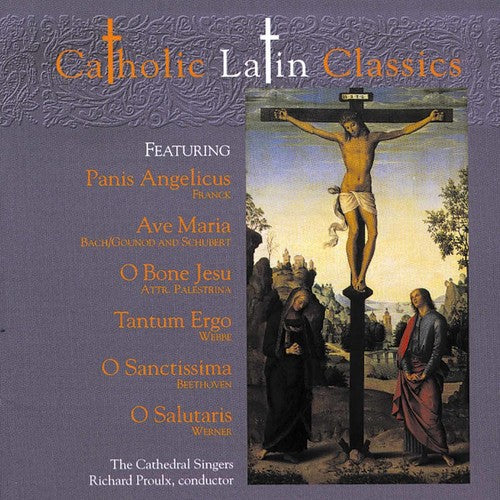
Catholic Classics, Vol. 4: Catholic Latin Classics
Yoshimatsu: Piano Works for the Left Hand
Tchaikovsky: The Nutcracker / San Francisco Ballet
 Also available on Blu-ray
Also available on Blu-rayTCHAIKOVSKY Nutcracker & • Martin West, cond; Damian Smith ( Drosselmeyer ); Elizabeth Powell ( Clara ); Davit Karapetyan ( Nutcracker ); David Arce ( Mouse King ); Yuan Yuan Tan ( Snow Queen ); Pierre-François Vilanoba ( Snow King ); Vanessa Zahorian ( Sugar Plum Fairy ); Maria Kochetkova ( Grand pas de deux ); San Francisco Ballet O • BBC/OPUS ARTE 1002 (DVD: 132: 00) Live: San Francisco 12/19–20/2007
& Illustrated synopsis, cast gallery, artists interviews, documentary on 1915 World’s Fair
This is a wonderful production of Nutcracker , although it must be noted that it is not strictly traditional. The time and location have been shifted to 1915 San Francisco. The second act, usually located in The Kingdom of Sweets (or Candy Land, or Land of the Sugar Plum Fairy) has been placed in a pavilion at the 1915 Panama Pacific International Exposition. The act I setting in a Victorian “painted lady” and Edwardian costumes are still remote enough from today that the production retains a period flavor.
The first act is fairly faithful to the traditional story line: Christmas party, magical happenings at midnight, battle between soldiers and mice, ending with the “Waltz of the Snowflakes.” Instead of immobilizing the Mouse King by throwing her shoe, Clara distracts him and he steps into a large mousetrap. Clara and the Nutcracker travel to the Land of Snow in a glittering sleigh pulled by four horses with ingenious heads reminiscent of costumes from Equus . There is a spectacular snowfall during the “Waltz of the Snowflakes.” Throughout the act are many ingenious and effective special effects.
The second act, relocated to a pavilion at the Fair (identified as The Pavilion of Dreams), has many clever touches. Fitting with an international exposition, representatives from various countries arrive. A genie emerges from a large Aladdin’s lamp in the “Arabian Dance”; the Russian dancers leap out of giant Fabergé eggs, and Mother Ginger is transformed into Madame du Cirque whose copious gown is a large, festive three-ring circus tent from which emerges a dancing bear. The young Clara steps into a mirrored chamber and emerges as an adult to dance the pas de deux and variations usually assigned to the Sugar Plum Fairy and her prince. This is a first-class production with brilliant dancing, imaginative special effects, colorful costumes, and attractive scenery. Like many other productions of Nutcracker , the choreographer grounds the story line in reality by letting us know that all the fantastic happenings are merely Clara’s dream. For me, at least, that spoils the magic; it’s much more fun to pretend all the amazing events that begin at midnight really do happen. Telling us it was “just a dream” is like coming on stage after a magician has finished his act and announcing, “It’s an illusion, folks. The lady wasn’t sawn in half.” Do we really want a pin stuck in our balloon?
This San Francisco Nutcracker is on a par with Royal Ballet (their newer video from 2000 with Anthony Dowell’s incomparable Drosselmeyer), the Balanchine (with unnecessary interpolations and narration), and The Hard Nut , a clever, updated Nutcracker by Mark Morris. There are a plethora of Nutcracker videos; I’ve seen about a dozen of them. All have good and weak points, many dependent on the viewer’s likes and dislikes, but I would recommend the Royal Ballet, Balanchine, The Hard Nut (noting that it is significantly untraditional), and this San Francisco for serious consideration as first choices. All of the Nutcracker s that I’ve seen on video are, for lack of a better term, over-filmed, including this San Francisco. The image relentlessly shifts between cameras every second or two, there are many close-ups highlighting details that often aren’t important, pans, and dissolves that temporarily blur both images. Choreographer Helgi Tomasson has provided plenty of movement; we don’t need artificial action created by excessive editing. I sincerely hope that any of you who watch this video aren’t as bothered by the film direction as I was; the San Francisco Nutcracker deserves to be seen.
The bonus features, except for the First Republic Bank ad, are very interesting. Helgi Tomasson (choreographer, artistic director), Michael Yeargan (scenic designer), and Martin Pakledinaz (costume designer) in three separate interviews discuss their roles in creating the production. A separate track is devoted to the 1915 Panama Pacific International Exhibition with many historic photos. I wish the Cast Gallery or the booklet had included biographies of the principal dancers.
The picture is 16/9 anamorphic (wide screen), the sound formats are LPCM stereo and digital surround. Subtitles for the documentaries are in French, German, Spanish, and Italian.
FANFARE: David L. Kirk
Uncle Drosselmeyer: Damian Smith
Clara: Elizabeth Powell
The Nutcracker Prince: Davit Karapetyan
King of the Mice: David Arce
Queen of Snow: Yuan Yuan Tan
King of Snow: Pierre-François Vilanoba
Sugar Plum Fairy: Vanessa Zahorian
REGIONS: All
PICTURE FORMAT: 16:9
SOUND: DTS SURROUND 5.0 / LPCM 2.0 STEREO
SUBTITLES: French, German, Spanish, Italian
Gjeilo: Sunrise Mass / Jordan, Westminster Williamson Voices
-----
REVIEW:
Norwegian New Yorker Aja Gjeilo's music is thoroughly tonal. He seems to specialize in church music, with quotations in this mass from Duruflé and Mendelssohn. Texts by Hildegard von Bingen are rewritten and freely orchestrated. The others are by the composer. Harmony is clean and conservative, with occasional surprises in the voiceleading. For the most part, this is lovely and very beautiful. There is nothing here that could not be sung by well-schooled amateur choir singers. In fact, choral aficionados will surely enjoy this.
– American Record Guide (Allen Gimbel)
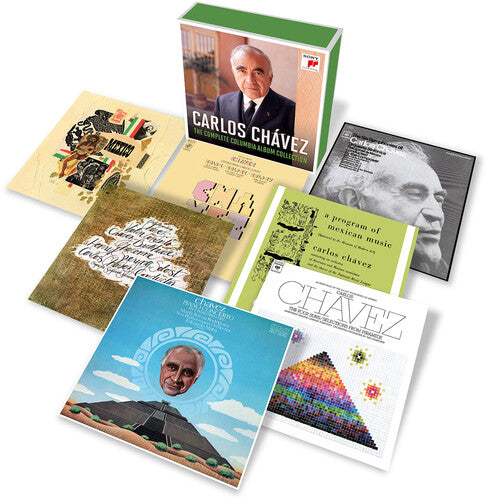
Chávez: The Complete Columbia Album Collection
Sony Classical is pleased to announce an important reissue of works by Carlos Chávez, one of the most influential figures in the history of Mexican music. Most of these recordings, which span the years 1938 to 1980, are conducted by Chávez himself and have never appeared before on CD.
CONTENTS:
J.L. Adams: Sila - The Breath of the World / JACK Quartet, The Crossing
Acclaimed by the New York Times as "an alluring, mystical new work" when it premiered outdoors at the city's Lincoln Center in July 2014, John Luther Adams' Sila: the Breath of the World is so carefully orchestrated that the recording itself pushes the limits of how to capture multiple ensembles of musicians in one setting. Thanks to modern technology and the magic of multi-tracking (with producers Doug Perkins and Nathaniel Reichman at the controls), Sila maintains the composer's vision as a grand invitation to the listener "to stop and listen more deeply." Put simply, like Inuksuit (2009), widely known as Adams' large ensemble piece for percussion, no two performances of Sila are ever the same, due in part to the freedom that is given to the musicians, each of whom plays or sings a unique part at his or her own pace. But on a macro level, Sila can also be described as an intelligent entity all its own — a living, breathing organism that takes on the collective intent of its performers, and its composer, to transcend the forces of nature and become, in a sense, a "breath of the world."
Beethoven: Symphony No. 9 / Laycock, Vienna Chamber Orchestra
Nielsen: Clarinet Concerto & Chamber Music with Clarinet
This delightful and lighthearted album features virtuoso clarinetist David Shifrin performing Carl Nielsen’s Clarinet Concerto in a newly arranged accompaniment for chamber orchestra. The dramatic work unfolds unpredictably in short, contrasting episodes that allow the soloist to explore a range of moods and colors. We are then treated to Nielsen’s charming Six Humorous Bagatelles, written for his children. From the simply put “Hello, Hello” to the final “Musical Clock,” these endearing pieces radiate good humor and adventure. Nielsen’s early Fantasy Pieces with their varying moods and harmonic twists reveal Nielsen’s romantic side, and his Serenata in Vano for wind quintet shows off Nielsen’s affinity for wind instruments and his quirky, playful sensibility. “If there is a bel canto school of clarinet playing, Shifrin is surely its finest exponent.” (The Los Angeles Times)




 {# optional: put hover video/second image here positioned absolute; inset:0 #}
{# optional: put hover video/second image here positioned absolute; inset:0 #}


 {# optional: put hover video/second image here positioned absolute; inset:0 #}
{# optional: put hover video/second image here positioned absolute; inset:0 #}


 {# optional: put hover video/second image here positioned absolute; inset:0 #}
{# optional: put hover video/second image here positioned absolute; inset:0 #}


 {# optional: put hover video/second image here positioned absolute; inset:0 #}
{# optional: put hover video/second image here positioned absolute; inset:0 #}


 {# optional: put hover video/second image here positioned absolute; inset:0 #}
{# optional: put hover video/second image here positioned absolute; inset:0 #}


 {# optional: put hover video/second image here positioned absolute; inset:0 #}
{# optional: put hover video/second image here positioned absolute; inset:0 #}


 {# optional: put hover video/second image here positioned absolute; inset:0 #}
{# optional: put hover video/second image here positioned absolute; inset:0 #}
 {# optional: put hover video/second image here positioned absolute; inset:0 #}
{# optional: put hover video/second image here positioned absolute; inset:0 #}


 {# optional: put hover video/second image here positioned absolute; inset:0 #}
{# optional: put hover video/second image here positioned absolute; inset:0 #}


 {# optional: put hover video/second image here positioned absolute; inset:0 #}
{# optional: put hover video/second image here positioned absolute; inset:0 #}


 {# optional: put hover video/second image here positioned absolute; inset:0 #}
{# optional: put hover video/second image here positioned absolute; inset:0 #}
 {# optional: put hover video/second image here positioned absolute; inset:0 #}
{# optional: put hover video/second image here positioned absolute; inset:0 #}


 {# optional: put hover video/second image here positioned absolute; inset:0 #}
{# optional: put hover video/second image here positioned absolute; inset:0 #}


 {# optional: put hover video/second image here positioned absolute; inset:0 #}
{# optional: put hover video/second image here positioned absolute; inset:0 #}


 {# optional: put hover video/second image here positioned absolute; inset:0 #}
{# optional: put hover video/second image here positioned absolute; inset:0 #}